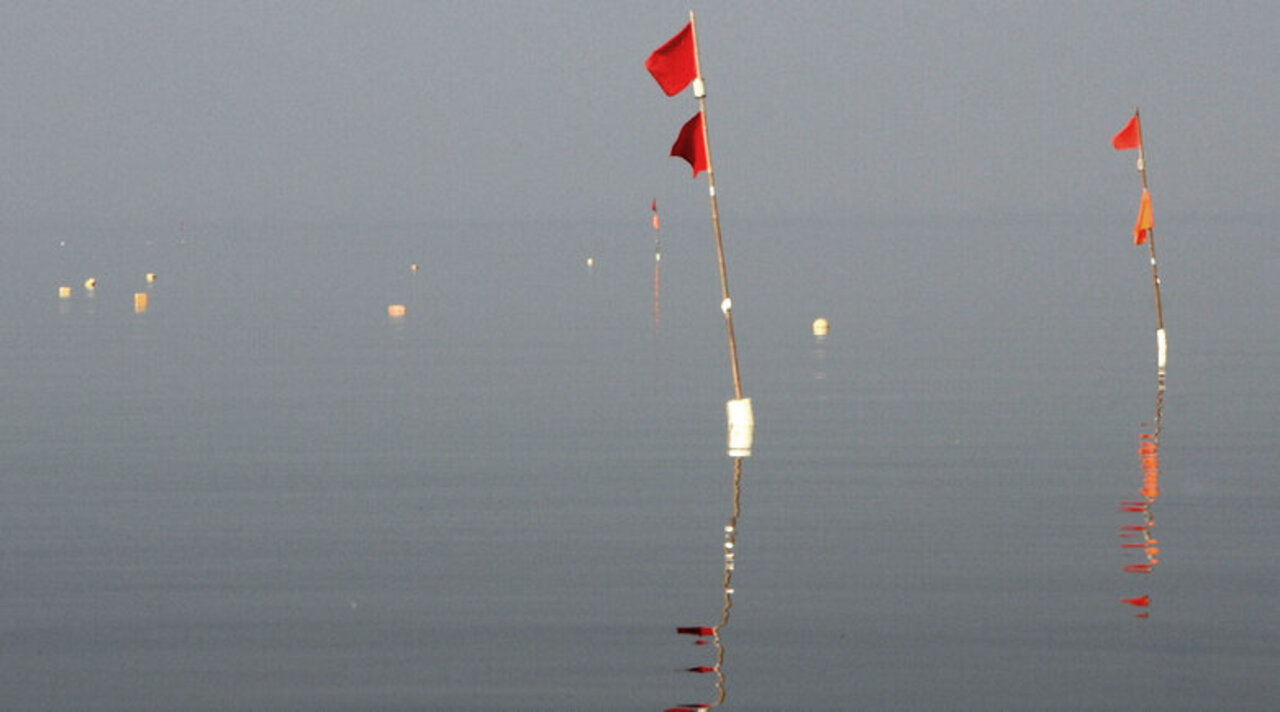Project
Gill net fisheries: Development of alternative management approaches (STELLA)

Development of alternative management approaches and fishing gear and techniques towards minimizing conflicts in gill net fisheries and conservation objectives and subjects of protection in the EEZ of the Baltic Sea (STELLA)
Previous approaches to mitigate the potential conflict between passive fisheries and conservation goals were limited to the development and testing of possible measures. These measures include the discussed exclusion of fisheries from certain areas or a reduction of effort. Since currently the actual effort is not known, the success of such measures can hardly be estimated reliably. Year-round closing of larger areas would have considerable socio-economic consequences, not only for the fishing industry but also for directly (processing, maintenance, port industries) or indirectly (tourism) dependent industries and trades. Studies concerning the increase of acceptance of conservation measures by the fisheries have so far rarely been conducted but are vital for the successful introduction. Such studies could, for example, refer to the improvement of the data situation or the drive systems for the use of modified or alternative fishing gears.
Background and Objective
The overall objective of this project is to make significant progress towards resolving existing or potential conflicts between the activities of passive fisheries (mainly gill-net fishing) and the conservation of marine birds and marine mammals in the German EEZ of the Baltic Sea.
Approach
In the past experiments on different modifications of gill-nets and even alternatives to gill-net use in general were conducted to reduce unwanted by-catch. To reduce the by-catch of porpoises for example the “acoustic visibility” of net-material was increased which is supposed to lead to a better detection of nets by means of the porpoise’s biosonar. Another method is the use of so-called Pingers (“startlers”) which emit a signal that is unpleasant for porpoises and thus should keep them away from gill-nets. In some areas of the Baltic the use of Pingers is mandatory, but not for all fleet segments. However, the long-term effectiveness of the hitherto used Pingers is not guaranteed. Uncontrolled failure of devices can occur and result in the animals being lead into the “silent” net areas. At the same time the possibility of familiarisation effects is being discussed. Additionally, the ‘startlers’ could further reduce the available habitat and therefore be contrary to the conservation goals. Consequently, work is being conducted on an alternative Pinger concept where the porpoises are being warned by species-specific signals (PAL, current study under leadership of the Thuenen Institute of Baltic Fisheries). Regarding the native and migratory marine birds for which the Baltic represents an important moulting-, roosting- and breeding-area, there are up to now no differentiated concepts to decrease by-catch which have proven to be practical in commercial passive fisheries – except for a blanket exclusion of fisheries.
Results
See list of publications
Thünen-Contact

Involved Thünen-Partners
- Barz, FannyOF Institute of Baltic Sea Fisheries
- Chladek, JeromeOF Institute of Baltic Sea Fisheries
- Eckardt, JosefaOF Institute of Baltic Sea Fisheries
- Ferretti, JohannaOF Institute of Baltic Sea Fisheries
- Kraak, SarahOF Institute of Baltic Sea Fisheries
- Kratzer, IsabellaOF Institute of Baltic Sea Fisheries
- Krumme, UweOF Institute of Baltic Sea Fisheries
- Meyer, SteffiOF Institute of Baltic Sea Fisheries
- Stepputtis, Daniel OF Institute of Baltic Sea Fisheries
- Strehlow, Harry VincentOF Institute of Baltic Sea Fisheries
Involved external Thünen-Partners
-
Bundesamt für Naturschutz BfN
(Bonn/Vilm, Deutschland)
Funding Body
-
Federal Agency for Nature Conservation (BfN)
(national, öffentlich)
Duration
11.2016 - 7.2020
More Information
Project funding number: 3516 82 1300
Funding program: BMUB - Umweltforschungsplan
Project status:
finished
Further Projects
The developement work from Stella 1 (gill net modifications, alternative gears) will be continued in the Stella 2 project. (more information coming soon)
Publications
- 0
Barz F (2023) Identifying social practices to inform fisheries management - the case of bycatch practices of marine mammals and seabirds of German gillnet fishers. ICES J Mar Sci 80(3):458-468, DOI:10.1093/icesjms/fsac208
- 1
Kratzer I, Stepputtis D, Santos J, Lütkefedder F, Stoltenberg A, Hartkens L, Schaber M, Kindt-Larsen L, Larsen F (2022) Angle-dependent acoustic reflectivity of gillnets and their modifications to reduce bycatch of odontocetes using sonar imaging. Fish Res 250:106278, DOI:10.1016/j.fishres.2022.106278
- 2
Barz F (2022) Boats don’t fish, people do: A sociological contribution towards holistic fisheries bycatch management. Braunschweig: Johann Heinrich von Thünen-Institut, 244 p, Rostock, Univ, Wirtschafts- und Sozialwiss Fak, Diss, 2021, Thünen Rep 95, DOI:10.3220/REP1652092494000
- 3
Meyer S, Krumme U, Stepputtis D, Zimmermann C (2022) Use of a smartphone application for self-reporting in small-scale fisheries: Lessons learned during a fishing closure in the western Baltic Sea. Ocean Coastal Manag 224:106186, DOI:10.1016/j.ocecoaman.2022.106186
- 4
Chladek J-C, Stepputtis D, Hermann A, Ljungberg P, Rodriguez-Tress P, Santos J, Svendsen JC (2021) Development and testing of fish-retention devices for pots: transparent triggers significantly increase catch efficiency for Atlantic cod (Gadus morhua). ICES J Mar Sci 78(1):199-219, DOI:10.1093/icesjms/fsaa214
- 5
Meyer S, Krumme U (2021) Disentangling complexity of fishing fleets: using sequence analysis to classify distinguishable groups of vessels based on commercial landings. Fish Manag Ecol 28(3):268-282, DOI:10.1111/fme.12472
- 6
Kratzer I (2021) Gillnet modifications to reduce bycatch of harbor porpoises. DTU Aqua National Institute of Aquatic Resources, 172 p, Lyngby, Techn Univ of Denmark, Section for Ecosystem Based Marine Management, PhD Thesis
- 7
Kratzer I, Brooks ME, Bilgin S, Ozdemir S, Kindt-Larsen L, Larsen F, Stepputtis D (2021) Using acoustically visible gillnets to reduce bycatch of a small cetacean: first pilot trials in a commercial fishery. Fish Res 243:106088, DOI:10.1016/j.fishres.2021.106088
- 8
Chladek J-C, Stepputtis D, Hermann A, Kratzer I, Ljungberg P, Rodriguez-Tress P, Santos J, Svendsen JC (2021) Using an innovative net-pen-based observation method to assess and compare fish pot-entrance catch efficiency for Atlantic cod (Gadus morhua). Fish Res 236:105851, DOI:10.1016/j.fishres.2020.105851
- 9
Barz F, Eckardt J, Meyer S, Kraak SBM, Strehlow HV (2020) "Boats don't fish, people do"- how fishers' agency can inform fisheries-management on bycatch mitigation of marine mammals and sea birds. Mar Policy 122:104268, DOI:10.1016/j.marpol.2020.104268
- 10
Schwermer H, Barz F, Zablotski Y (2020) A literature review on stakeholder participation in coastal and marine fisheries. In: Jungblut S, Liebich V, Bode-Dalby M (eds) YOUMARES 9 - The oceans: our research, our future : Proceedings of the 2018 conference for YOUng MArine RESearcher in Oldenburg, Germany. Cham: Springer Open, pp 21-43, DOI:10.1007/978-3-030-20389-4_2
- 11
Kratzer I, Schäfer I, Stoltenberg A, Chladek J-C, Kindt-Larsen L, Larsen F, Stepputtis D (2020) Determination of optimal acoustic passive reflectors to reduce bycatch of odontocetes in gillnets. Front Mar Sci 7:539, DOI:10.3389/fmars.2020.00539
- 12
Hermann A, Chladek J-C, Stepputtis D (2020) iFO (infrared Fish Observation) - An open source low-cost infrared underwater video system. HardwareX 8:e00149, DOI:10.1016/j.ohx.2020.e00149
- 13
Schartmann H (2019) Activity pattern of the harbour por-poise Phocoena phocoena in the coastal waters of Fyn (Denmark). Rostock: Univ Rostock, 189 p, Rostock, Univ, Masterarbeit

![[Translate to English:] [Translate to English:]](/media/_processed_/d/7/csm_Startseite-OF_03_c0dfd6e750.png)
![[Translate to English:] [Translate to English:]](/media/_processed_/a/3/csm_20181116-151457-Stella-Jerome-Fischfalle-Warnem%C3%BCnde-Dorsche-im-Netzk%C3%A4fig-5691_heller_3050c72fa2.png)




